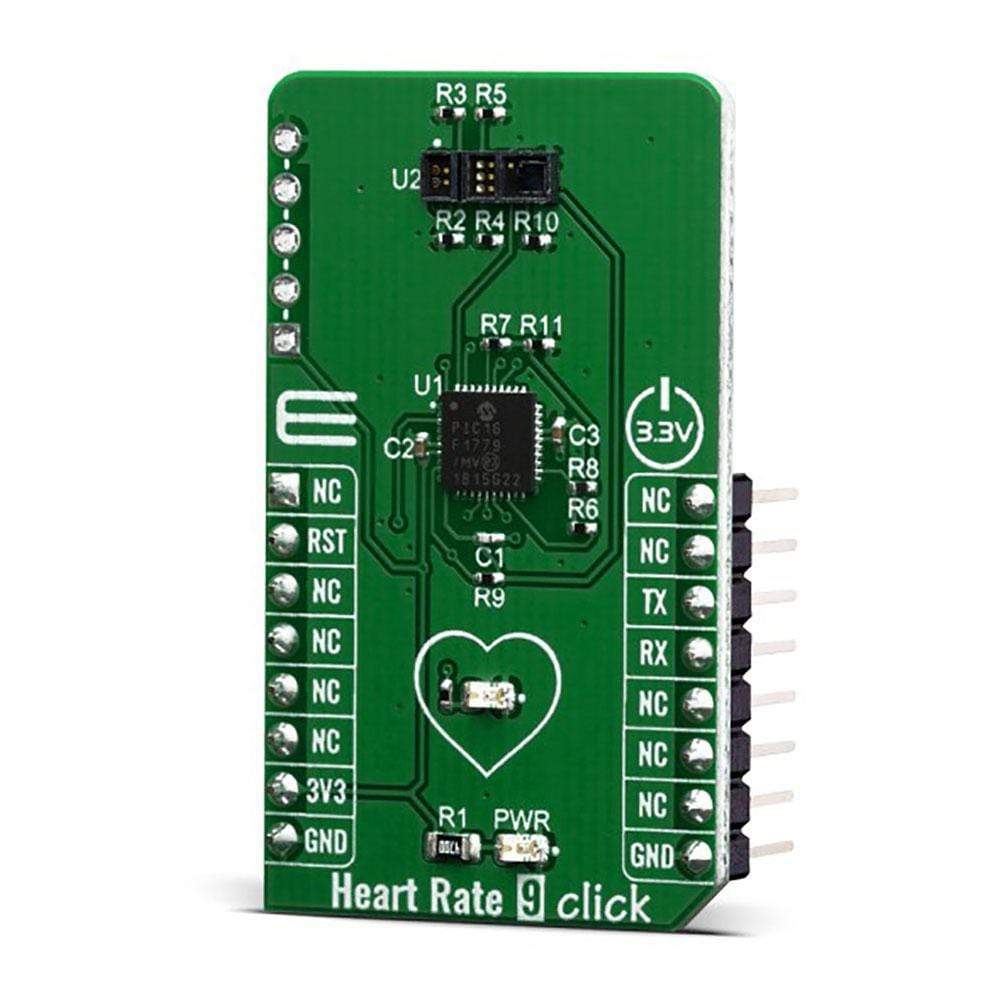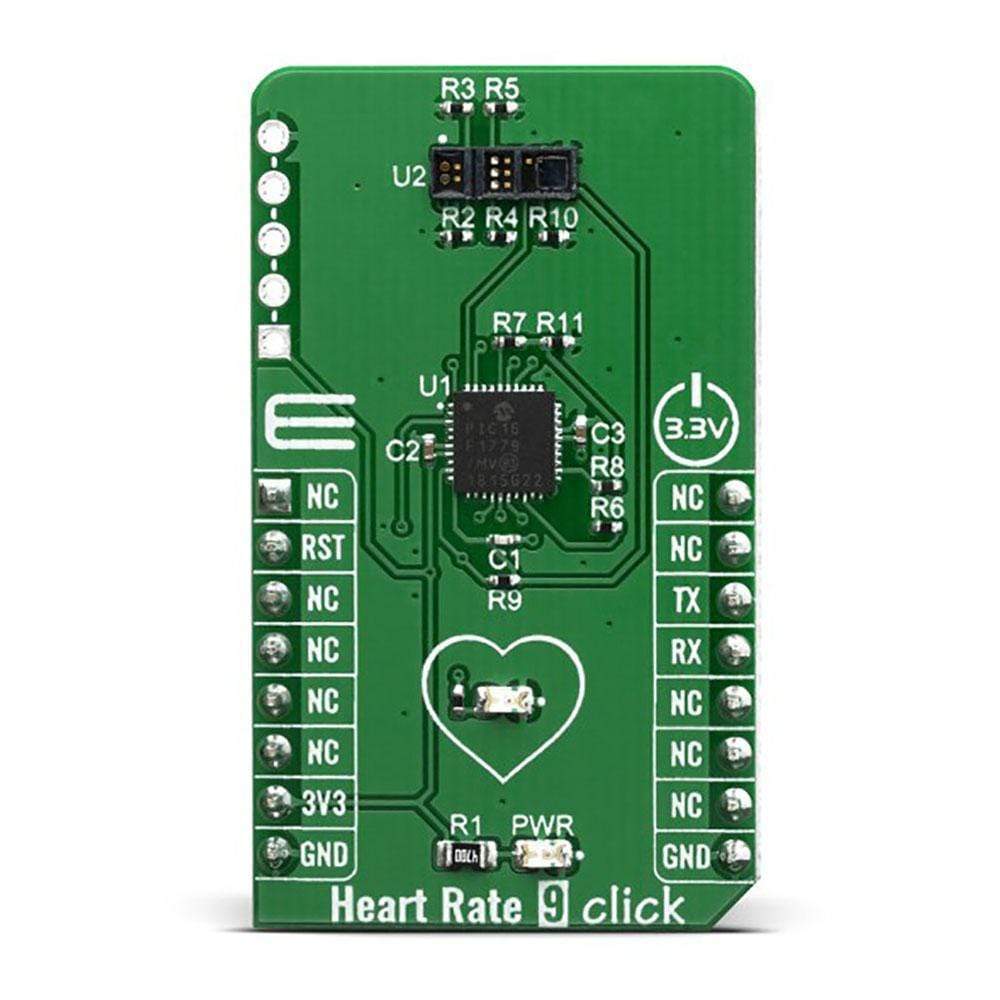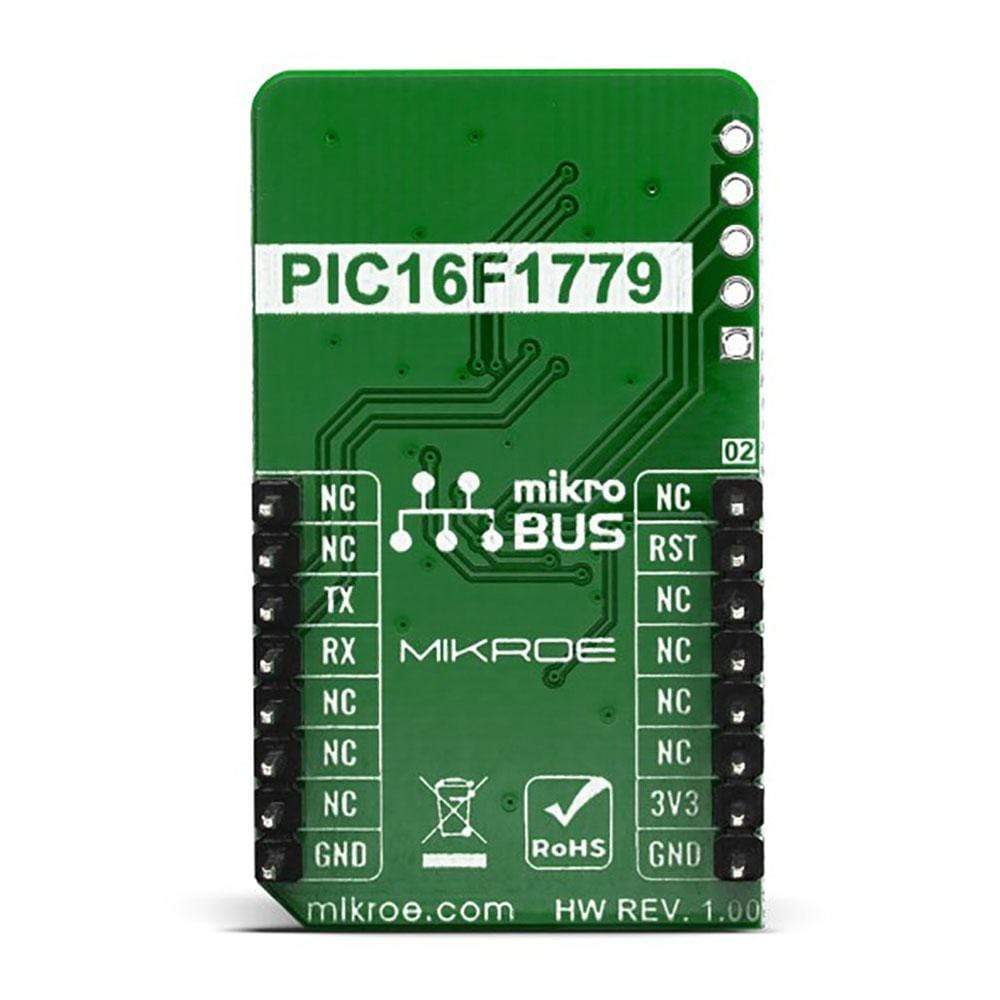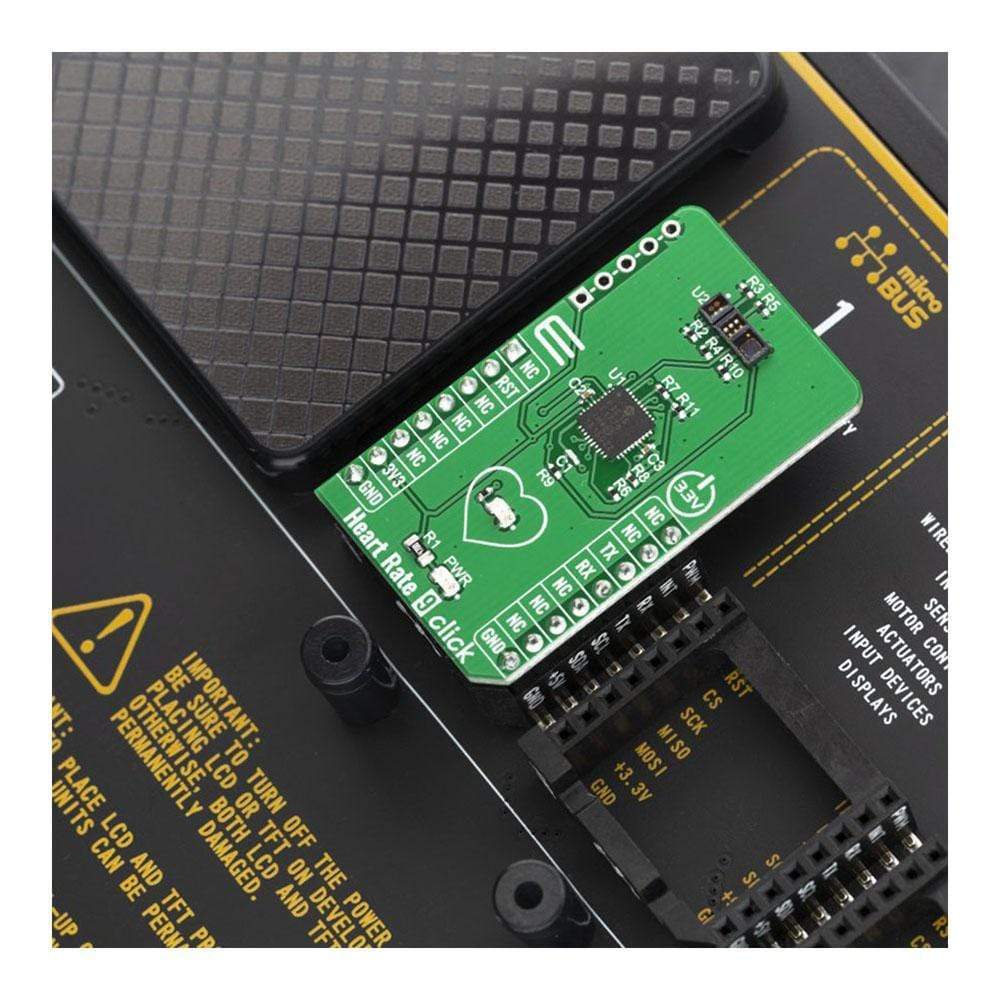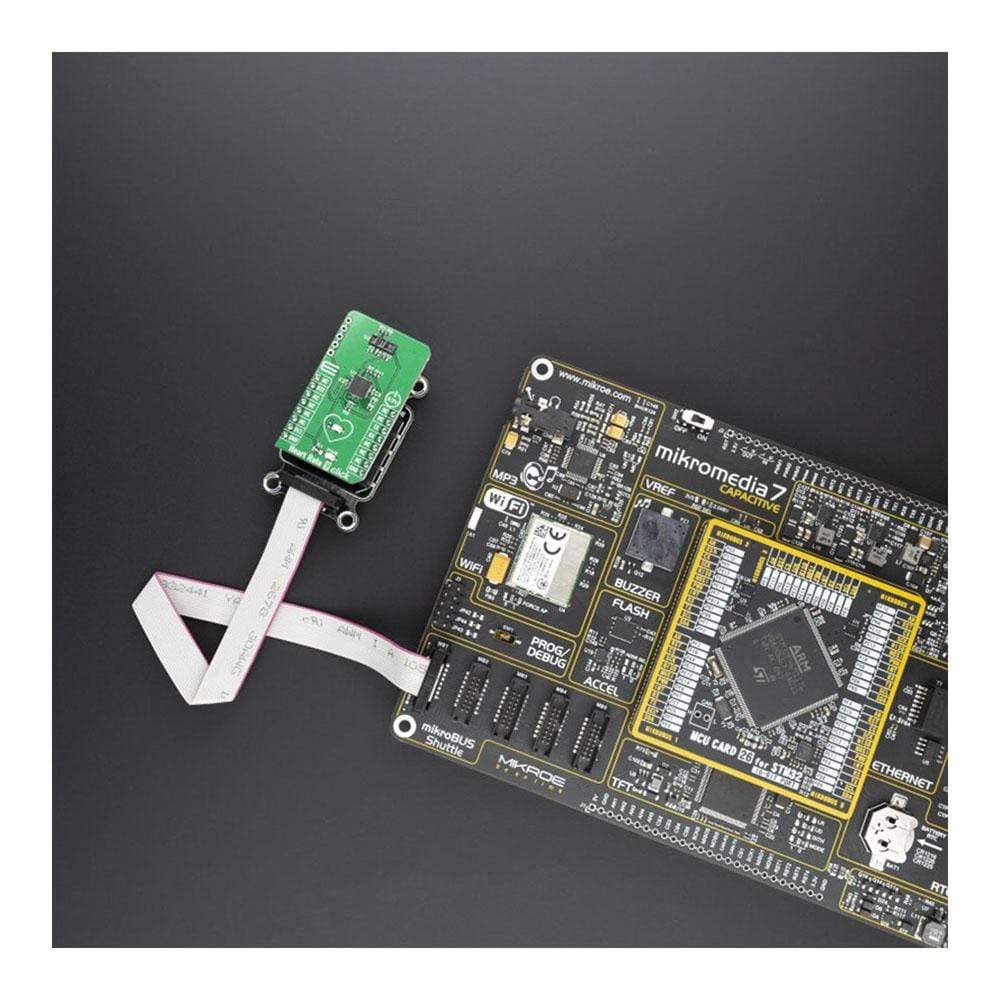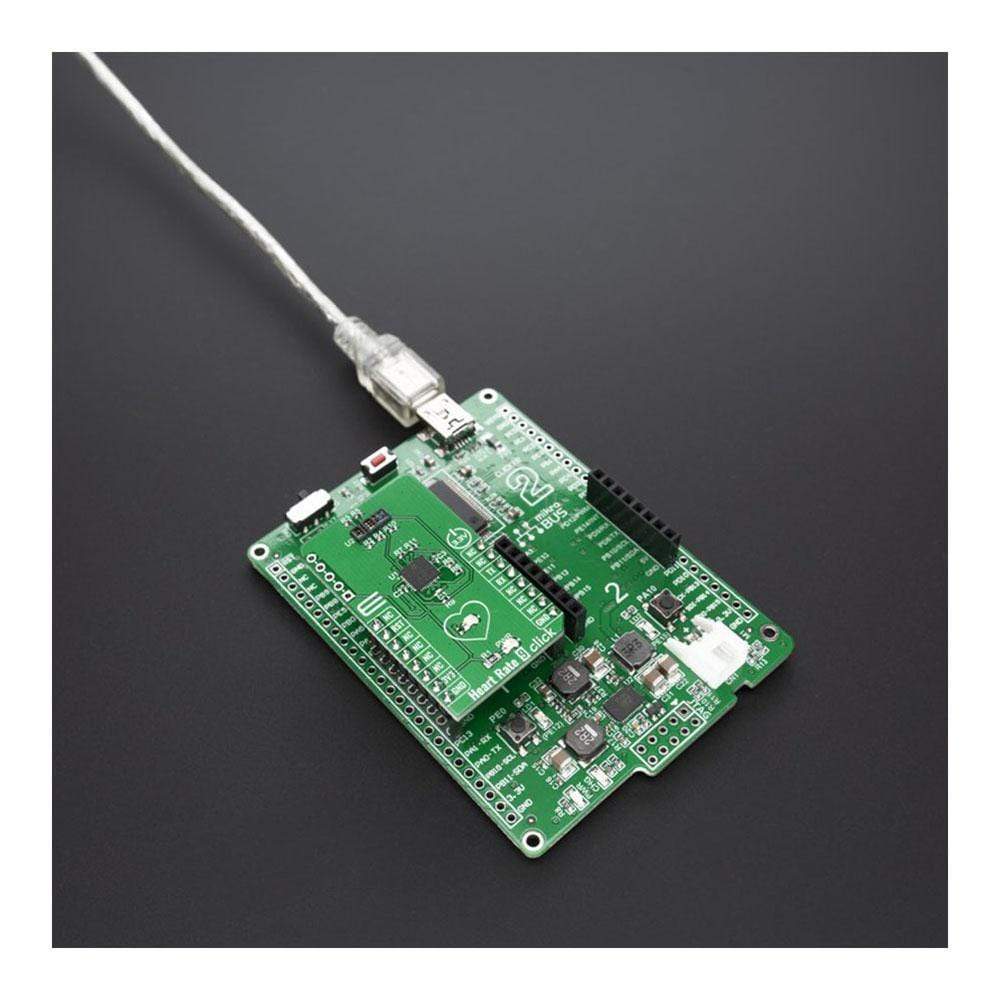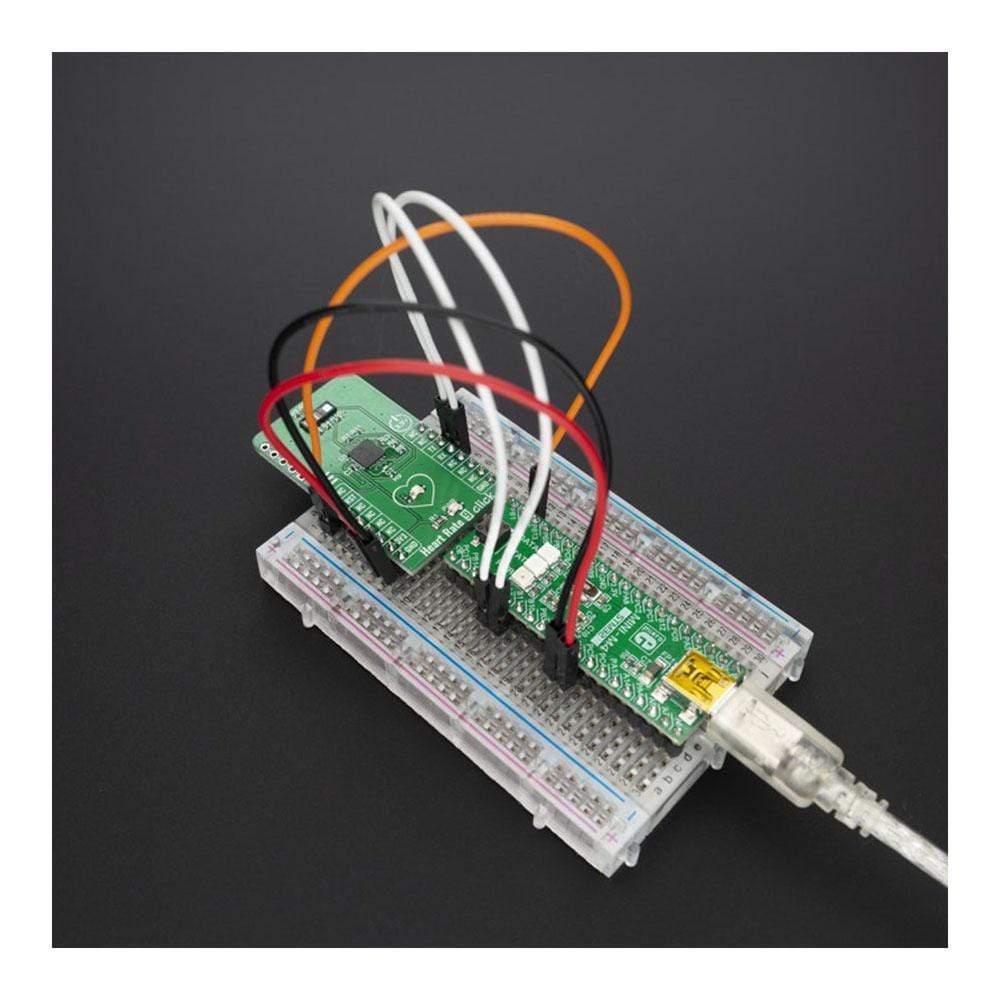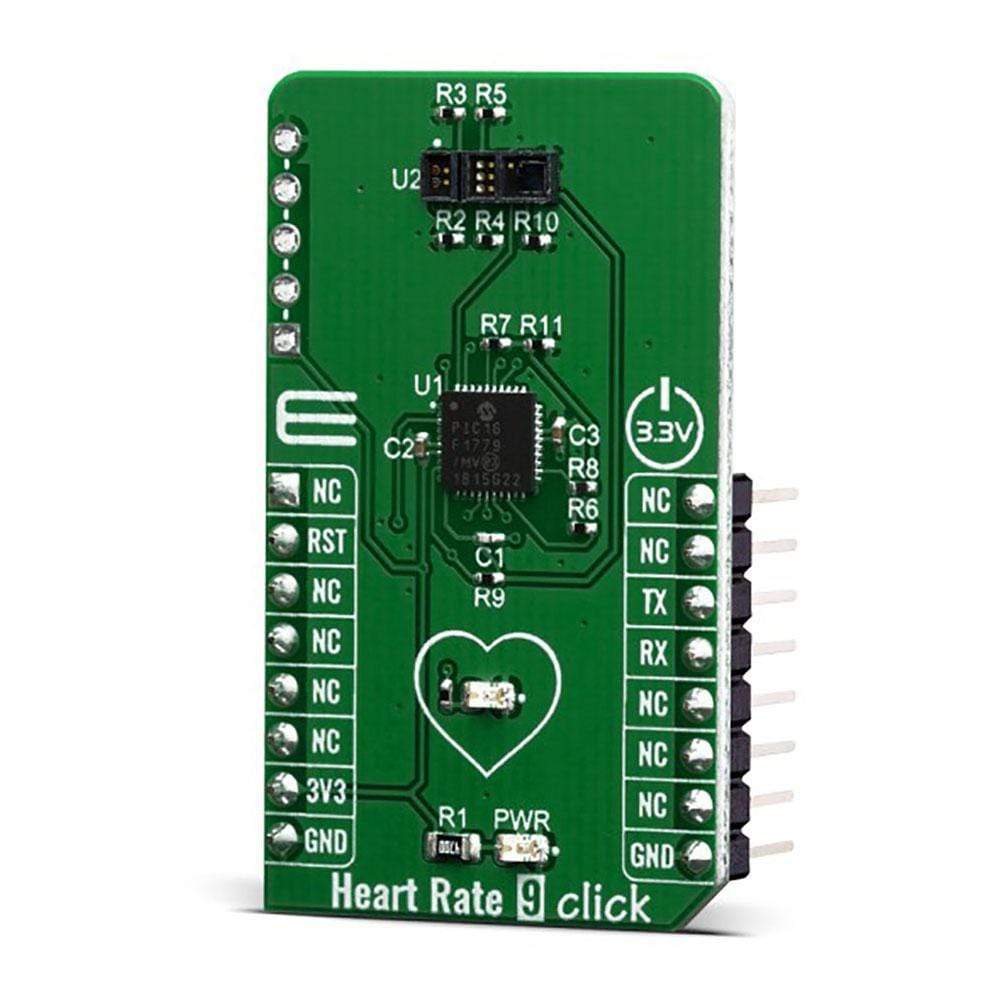
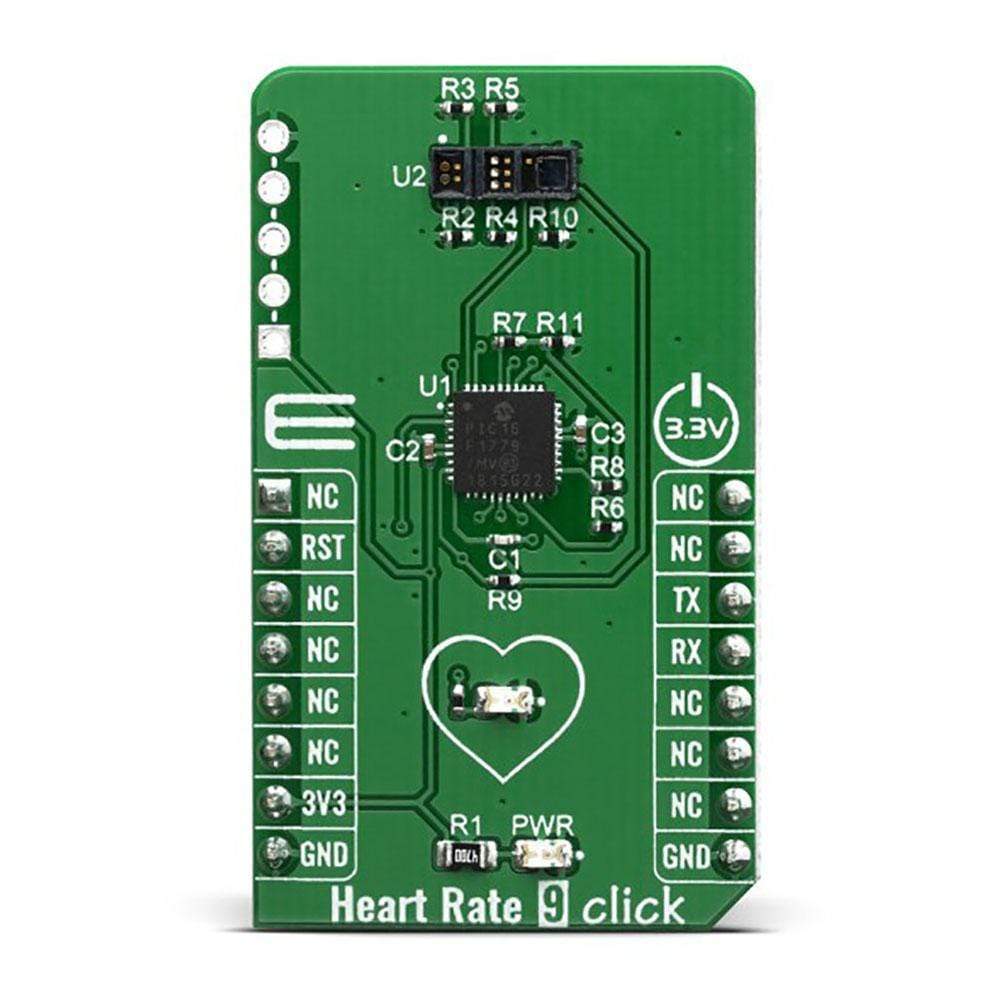
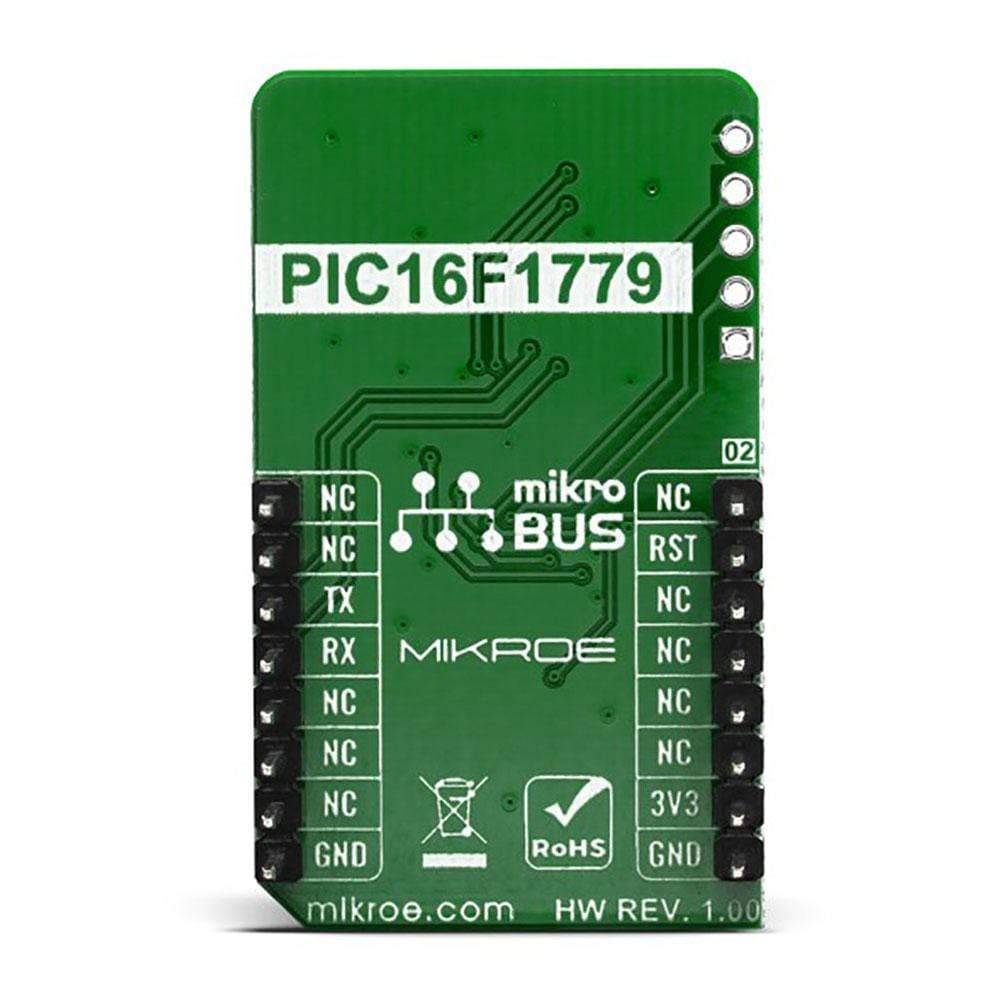
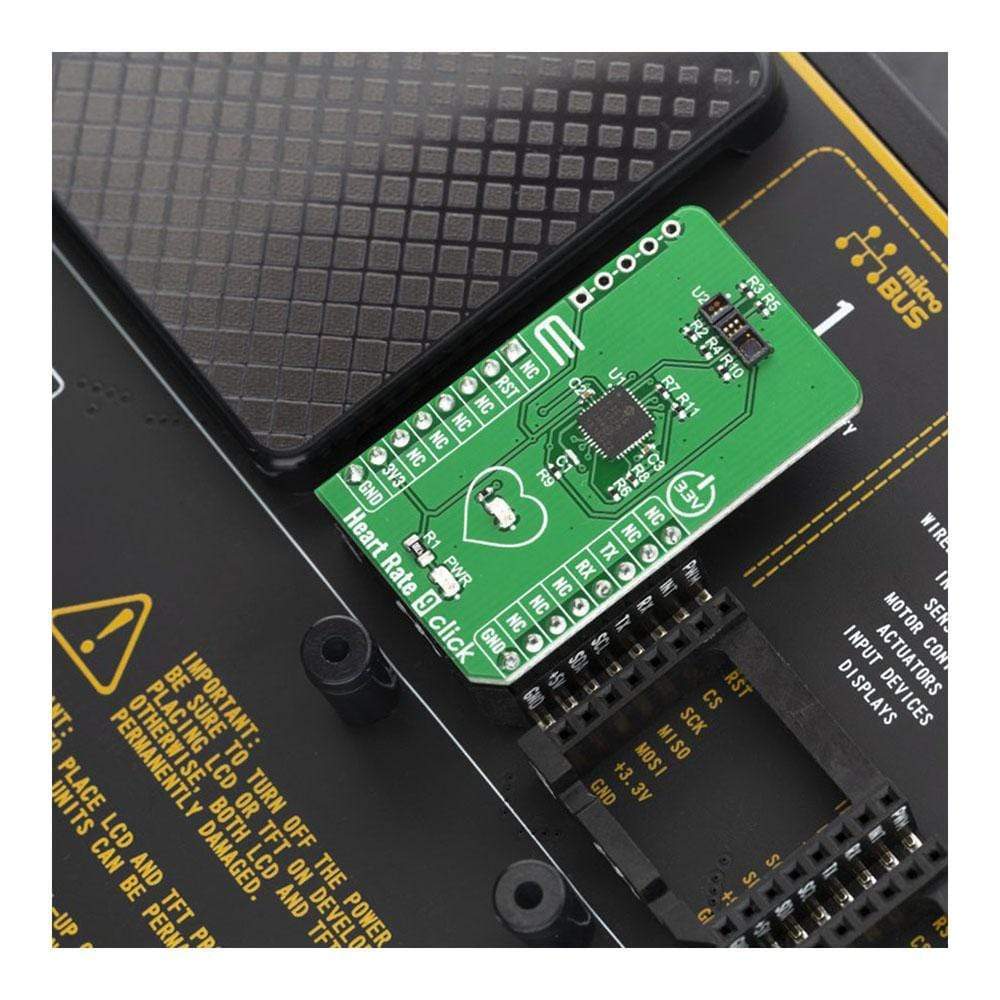
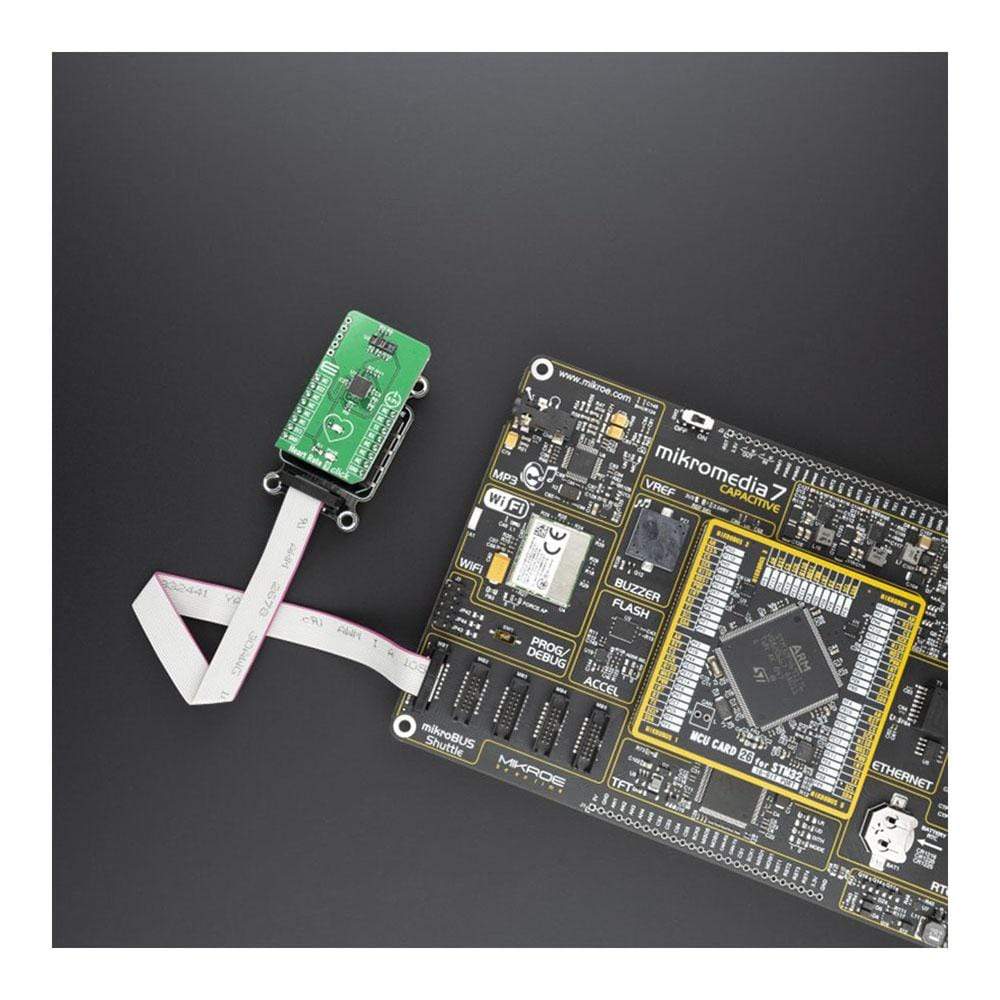
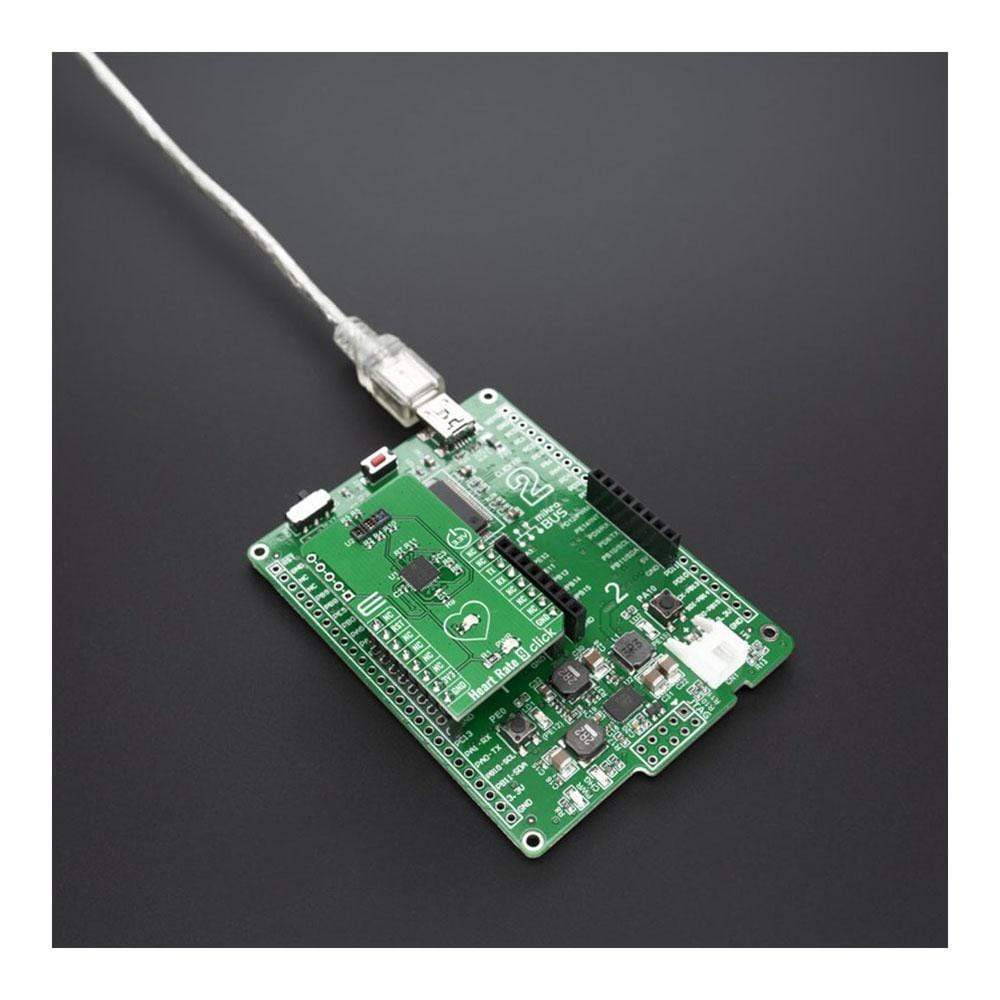
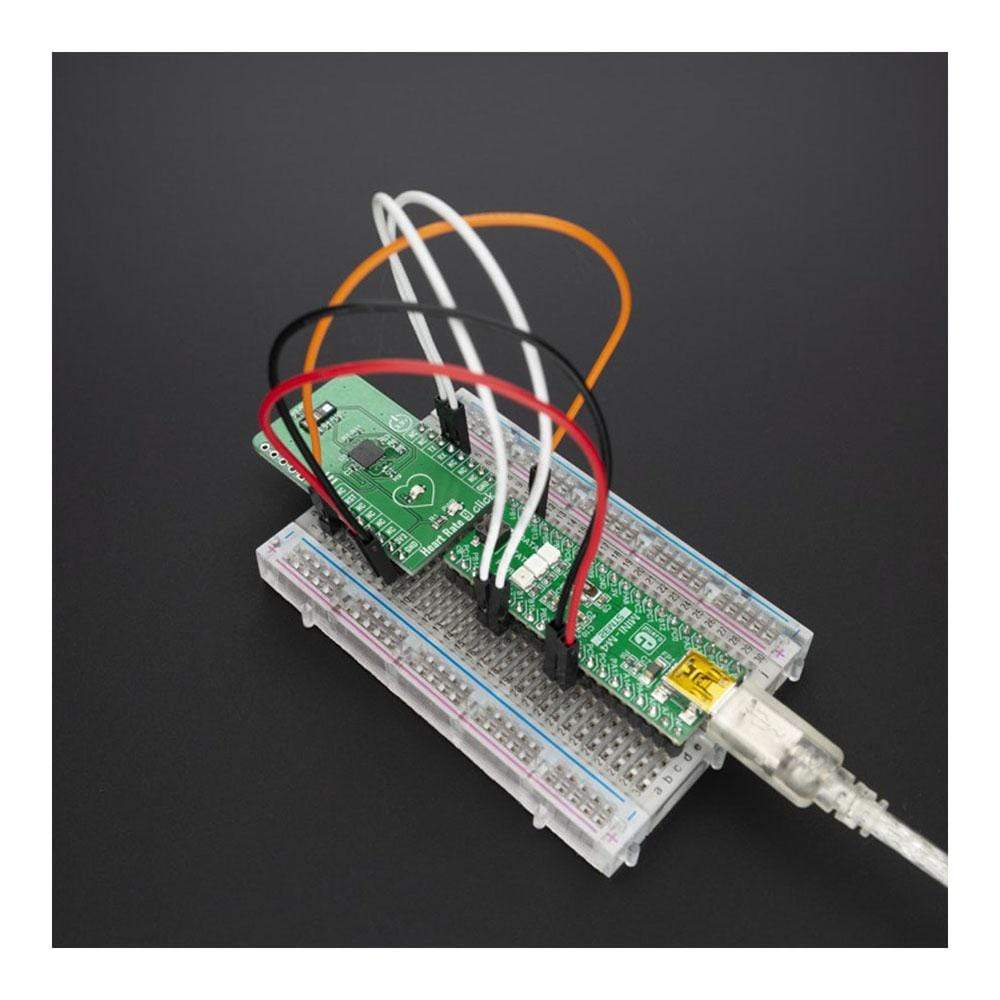
Overview
The Heart Rate 9 Click Board™ features the PIC16F1779 8-bit MCU and SFH 7060 heart rate and pulse oximetry monitoring sensor. This Click Board™ has an algorithm for processing data from the sensor and it can send data for 3 different diodes (Green, Infrared and Red) who give out a diagram of the heartbeat and its frequency per minute. The data has shown that the most notable signal comes from the green diode because it has the best reflection through the surface of the skin due to its shortest wavelength among three light sources. Implementing a light barrier to block optical crosstalk and improved geometry for optimized signal quality.
Most reflective heart rate monitors still have significant noise in their designs despite the use of complex and expensive analogue circuits such as Analog Front End (AFE) chips. A more cost-effective method for reducing noise and taking these measurements is necessary.
Downloads
Le Heart Rate 9 Click Board™ est équipé du microcontrôleur 8 bits PIC16F1779 et du capteur de surveillance de la fréquence cardiaque et de l'oxymétrie de pouls SFH 7060. Ce Click Board™ dispose d'un algorithme de traitement des données du capteur et peut envoyer des données à 3 diodes différentes (verte, infrarouge et rouge) qui fournissent un diagramme du rythme cardiaque et de sa fréquence par minute. Les données ont montré que le signal le plus notable provient de la diode verte car elle a la meilleure réflexion à travers la surface de la peau en raison de sa longueur d'onde la plus courte parmi les trois sources lumineuses. Mise en œuvre d'une barrière lumineuse pour bloquer la diaphonie optique et géométrie améliorée pour une qualité de signal optimisée.
La plupart des moniteurs de fréquence cardiaque à réflexion produisent encore un bruit important dans leur conception malgré l'utilisation de circuits analogiques complexes et coûteux tels que les puces Analog Front End (AFE). Une méthode plus rentable pour réduire le bruit et effectuer ces mesures est nécessaire.
| General Information | |
|---|---|
Part Number (SKU) |
MIKROE-3822
|
Manufacturer |
|
| Physical and Mechanical | |
Weight |
0.018 kg
|
| Other | |
Country of Origin |
|
HS Code Customs Tariff code
|
|
EAN |
8606018719709
|
Warranty |
|
Frequently Asked Questions
Have a Question?
Be the first to ask a question about this.

